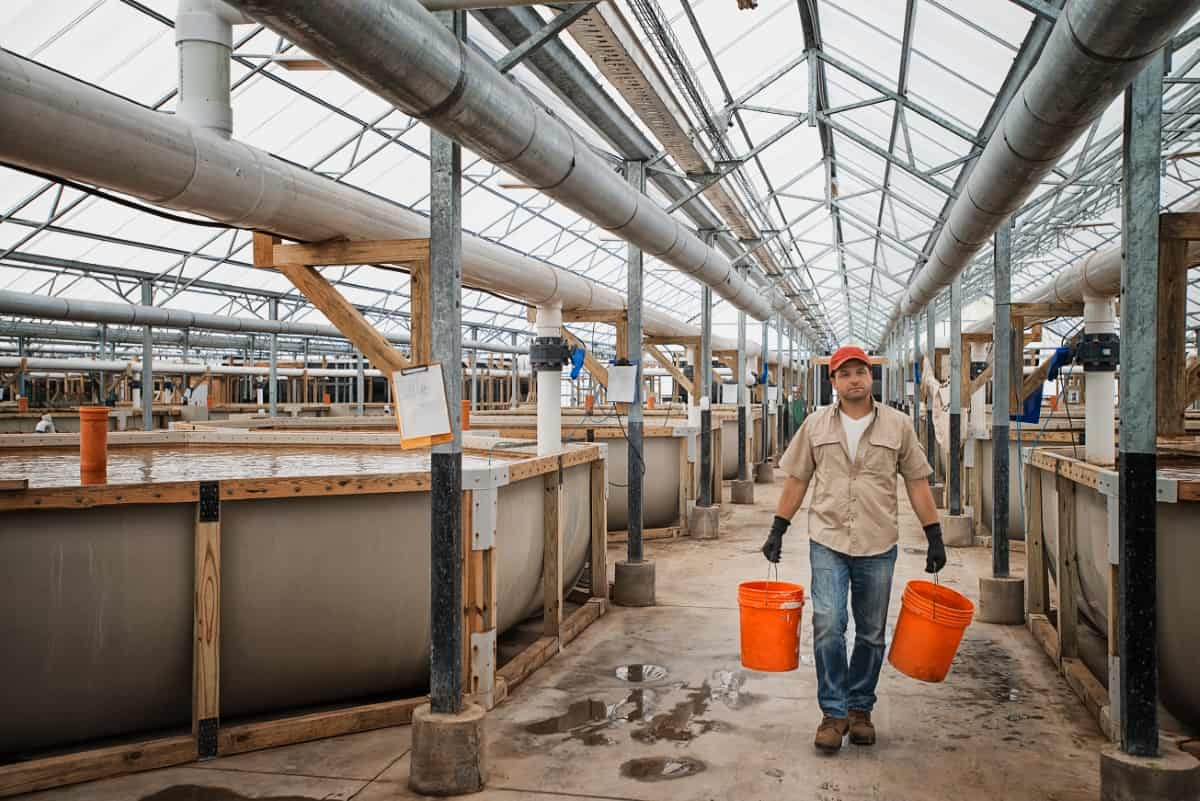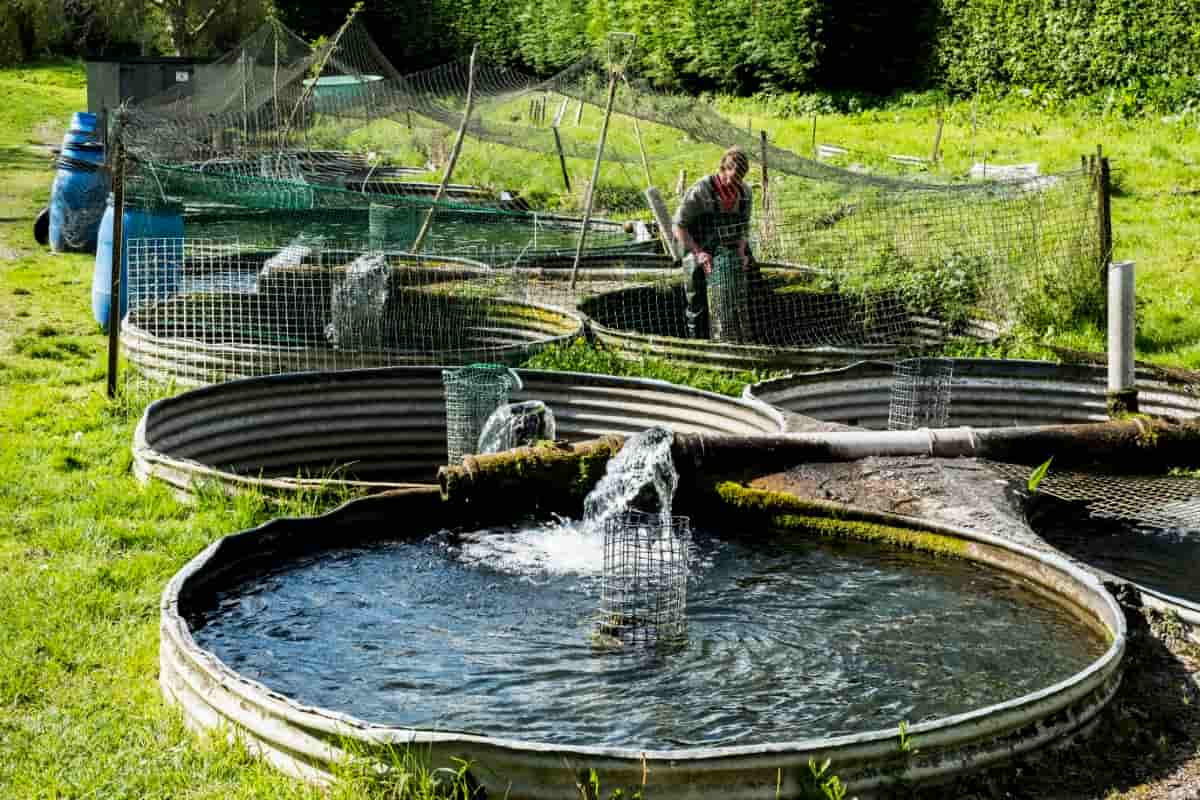Welcome to our comprehensive step-by-step guide on establishing your biofloc fish farm! In this exciting journey, we will explore the fascinating world of biofloc technology and how it revolutionizes fish farming. Whether you’re a seasoned aquaculture enthusiast or a beginner looking to dive into this eco-friendly method, this guide covers you. Get ready to embark on an engaging and creative adventure filled with easy-to-follow instructions. Let’s dive in and uncover the secrets of creating your own thriving biofloc fish farm!

How to Establish a Biofloc Fish Farm
What is a Biofloc Fish Farm?
A biofloc fish farm utilizes biofloc technology (BT), a sustainable system that repurposes waste nutrients as fish feed. Introducing cultured microorganisms into the water converts toxic fish waste and organic matter into microbial protein. This not only helps maintain water quality but also reduces costs.
To thrive in this system, fish species must be resilient to environmental fluctuations, capable of withstanding high stocking density, adaptable to changes in dissolved oxygen levels, and consuming microbial protein as food. BT is widely employed in large-scale shrimp and finfish farms in Asia.
Benefits of Establishing a Biofloc Fish Farm
Establishing a biofloc fish farm offers many benefits for a more sustainable and efficient aquaculture system. This eco-friendly culture system significantly reduces the environmental impact associated with traditional fish farming practices. Implementing limited or zero water exchange improves land and water use efficiency while reducing water pollution and the risk of pathogen introduction and spread.
Additionally, biofloc technology enhances the productivity of fish culture systems, leading to higher survival rates, improved growth performance, and more efficient feed conversion. This approach promotes higher biosecurity and reduces reliance on protein-rich feeds, producing cost-effective feed. Ultimately, biofloc fish farming helps alleviate the pressure on capture fisheries by utilizing cheaper food fish and trash fish for feed formulation.
Essential Steps-by-Step Guide to Establishing Your Own Biofloc Fish Farm
Step 1: Setting up the Pond/Tank
- Choose a suitable location considering factors like sunlight, temperature, and ventilation.
- If using a pond, line it with a protective layer to prevent soil contamination. Consider using a tank lined with concrete instead.
Step 2: Aeration
- Install aerators to maintain the suspended particles and distribute oxygen evenly.
- Proper placement of aerators ensures laminar flow and energy efficiency.
Step 3: Selection of Species
- Research and select fish species suitable for biofloc culture.
- Some species may struggle with high-suspended particle content, so choose species that thrive in biofloc conditions.
Step 4: Optimization of Carbon and Nitrogen
- Maintain the proper carbon-to-nitrogen (C/N) ratio to prevent ammonia peaks.
- Use carbon sources with a C/N ratio above ten and adjust feed mixtures accordingly.
In case you missed it: Key Rules to Successful Fish Pond Management: Water Quality to Feeding

Step 5: Biofloc Growth
- Introduce different algae, bacteria, and protozoa into the culture water, along with probiotics.
- Monitor the exponential growth of flocs using a cone-shaped beaker and count the settled particles.
Step 6: Monitoring, Harvest, and Clean-up
- Regularly monitor water quality parameters and adjust aeration if needed.
- Monitor the growth performance of the fish and record data on the growth rate, appearance, feed conversion ratio (FCR), and survival rate.
- Clean and prepare the pond for the next batch after harvest.
Growth Performance in Biofloc Fish Farm System
- Measure fish growth based on length and weight every 15 days.
- Calculate specific growth rate (SGR), percentage of weight gained (PWG), feed conversion ratio (FCR), protein efficiency ratio (PER), biomass, and survival rate.
- Use formulas like SGR(%), PWG(%), FCR, PER, and survival rate(%) to analyze the growth performance of the fish.
How Biofloc Fish Technology Works in Fish Farm?
Biofloc fish technology is an innovative approach in aquaculture that serves as a wastewater treatment method. This technique’s key principle is maintaining a higher C-N (carbon-nitrogen) ratio by introducing a carbohydrate source. This leads to the production of high-quality single-cell microbial protein, which improves water quality. The system promotes the growth of heterotrophic microbes that assimilate nitrogenous waste, providing a valuable feed source for the cultured species while acting as a bioreactor to control water quality.
Biofloc technology has a faster immobilization rate of toxic nitrogen species due to heterotrophs’ rapid growth and microbial production than autotrophic nitrifying bacteria. The technology relies on flocculation within the system to facilitate nutrient cycling. To prepare the inoculum, there are two methods available.
In Method 1, a clean tub with 150 liters of water is aerated vigorously. Pond soil, ammonium sulfate/urea, and a carbon source (such as jaggery, wheat flour, or tapioca flour) are added and mixed well. Adequate aeration is provided for 24-48 hours before transferring the inoculum to the main tank. In Method 2, a similar process is followed, but pond water or recirculating aquaculture system (RAS) water and a probiotic containing Bacillus and Aspergillus species are used. The remaining steps are the same as in Method 1.
Daily addition of a carbon source is necessary for floc development, with the amount based on the feed given and the desired C: N ratio. Once the floc volume reaches a certain level, further addition of the carbon source is not required. An ideal volume of floc, measured in an Imhoff cone, is around 10-15 ml/L for shrimp and 25-35 ml/L for fish. This measurement helps in monitoring the development of the biofloc system.
Species Suitable for Biofloc Fish Farm Culture
When selecting suitable species for a biofloc fish farm, certain factors must be considered. The success of a biofloc system relies on species that can derive nutritional benefits from consuming the floc directly. These systems are best suited for fish species that can tolerate high solids concentration in the water and are generally resilient to poor water quality.
In case you missed it: How to Start Koi Carp Fish Farming: DIY in 10 Steps Guide for Beginners

Some examples of species that thrive in biofloc systems include air-breathing fish like Singhi, Magur, Pabda, Anabas/Koi, and Pangasius. Non-air-breathing fish such as Common Carp, Rohu, Tilapia, and Milkfish are also compatible. Additionally, shellfish like Vannamei and Tiger Shrimp can be successfully cultured in biofloc systems.
Conclusion
Establishing a biofloc fish farm requires careful consideration of pond selection, proper ventilation, species choice, carbon control, biofloc growth, and regular cleaning. You can create a successful and sustainable biofloc fish farm by following these steps.
- Feed Your Flock for Less: Top 10 Tips to Save on Chicken Feed
- Ultimate Guide to Ossabaw Island Hog: Breeding, Raising, Diet, and Care
- Hatching Answers: The Top 10 Reasons Your Chickens Aren’t Laying Eggs
- Eggs and Economics: Breaking Down the Cost of Raising Backyard Chickens
- Defend Your Greens: Proven Methods to Keep Iguanas Out of Your Garden
- Ultimate Guide to Cinnamon Queen Chicken: A Comprehensive Guide for Beginners
- Ultimate Guide to California Tan Chicken: Breeding, Raising, Diet, Egg-Production and Care
- Ultimate Guide to Marsh Daisy Chicken: Breeding, Raising, Diet, and Care
- 10 Types of Chicken Farming Businesses You Can Start for Profits